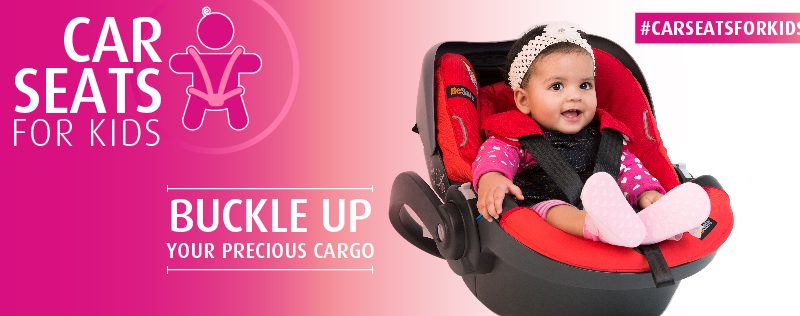Cold weather & car seats: Are bulky clothes risking your child’s life?
You wouldn’t wear a size 36 pair of jeans if you were a size 34, right? When you put your child in car seat wearing a bulky, winter jacket, you’re essentially doing the same thing – but with potentially dire consequences. With winter around the corner, now is the ideal time for parents to take a closer look at the link between car seats, winter jackets and their children’s safety.
1st for Women Insurance says that while the National Road Traffic Act stipulates that children under the age of three must be in a car seat and that children between the ages of three and 14, or 1.5 meters tall, must be in a car seat if one is available, the Automobile Association (AA) says that one third of children are still travelling without one. Studies show that if a child safety seat is correctly installed, and used by children aged 0 to four years, it can reduce the need for hospitalisation by 69% after a road accident.
According to Seugnette van Wyngaard, Head of 1st for Women Insurance: “Bulky jackets create the illusion that your child is safely buckled into their car seat when in fact the opposite is true. If you tighten your child’s harness around a thick jacket, that jacket will compress during an accident, making the harness loose and leading to an increased risk of injury. The problem with a thick jacket is that the harness may appear to be tight on the child when in fact, there’s too much space created by the soft fabric between the jacket and the child.”
Taking this into consideration, your child should be dressed only in clothes that they would wear inside your house. This way their harness can be securely fastened and be as snug as possible. Avoiding extra slack in the harness applies to children in booster seats as well.
1st for Women Insurance offers these tips for car seat safety:
• Check your child’s clothing before buckling up and make sure they’re wearing no more than they would be indoors.
• Ensure that your child is snug in their car seat – comfortable, but without too much room for their bodies to move from side to side, or front to back.
• Use the pinch test to make sure that your child’s harness is fastened properly:
• Step 1: Keep the big winter jacket on and harness your child in their car seat. Tighten your harness as you normally would for travel.
• Step 2: Unbuckle the harness, and without loosening it, take your child out of the car seat.
• Step 3: Remove their jacket and place them back in the car seat – buckling the harness once more. It needs to be checked for tightness.
• When buckled, you should not be able to pinch the webbing at the shoulder. When the harness is snug, your fingers should just slide off the harness as you try to pinch it together. Chances are you will need to tighten the harness even more to get it snug enough to properly fit your child.
• Rather use their jacket as a blanket. This is done by turning the jacket around and putting it on backwards with their arms through the arm holes.
• Don’t place anything underneath your child in the car seat, or between your child and the harness.
• Check that the straps aren’t twisted as this could reduce the effectiveness of the harness in a crash.
• If you are buying a second-hand car seat, only do so if you know its history or if it’s from a good source. Don’t buy or use a seat that’s been involved in an accident, or has worn straps, buckles or attachment points.
• Set a good example as a parent and always buckle up too.
Many parents believe that it is safe to hold their baby in their arms or keep their child on their lap in the car, but this is not true. Research has shown that passengers have less than half a second to react in a collision or sudden stop, and it’s unlikely an adult can hold onto a child during this time.
“When choosing a seat, it’s important to get one that matches your child’s weight. If a child is restrained in the wrong system for their age or weight, or the straps or harnesses are not adequately secured or entirely left undone, it will put the child at an increased risk of both fatal and non-fatal injuries,” notes van Wyngaard.




